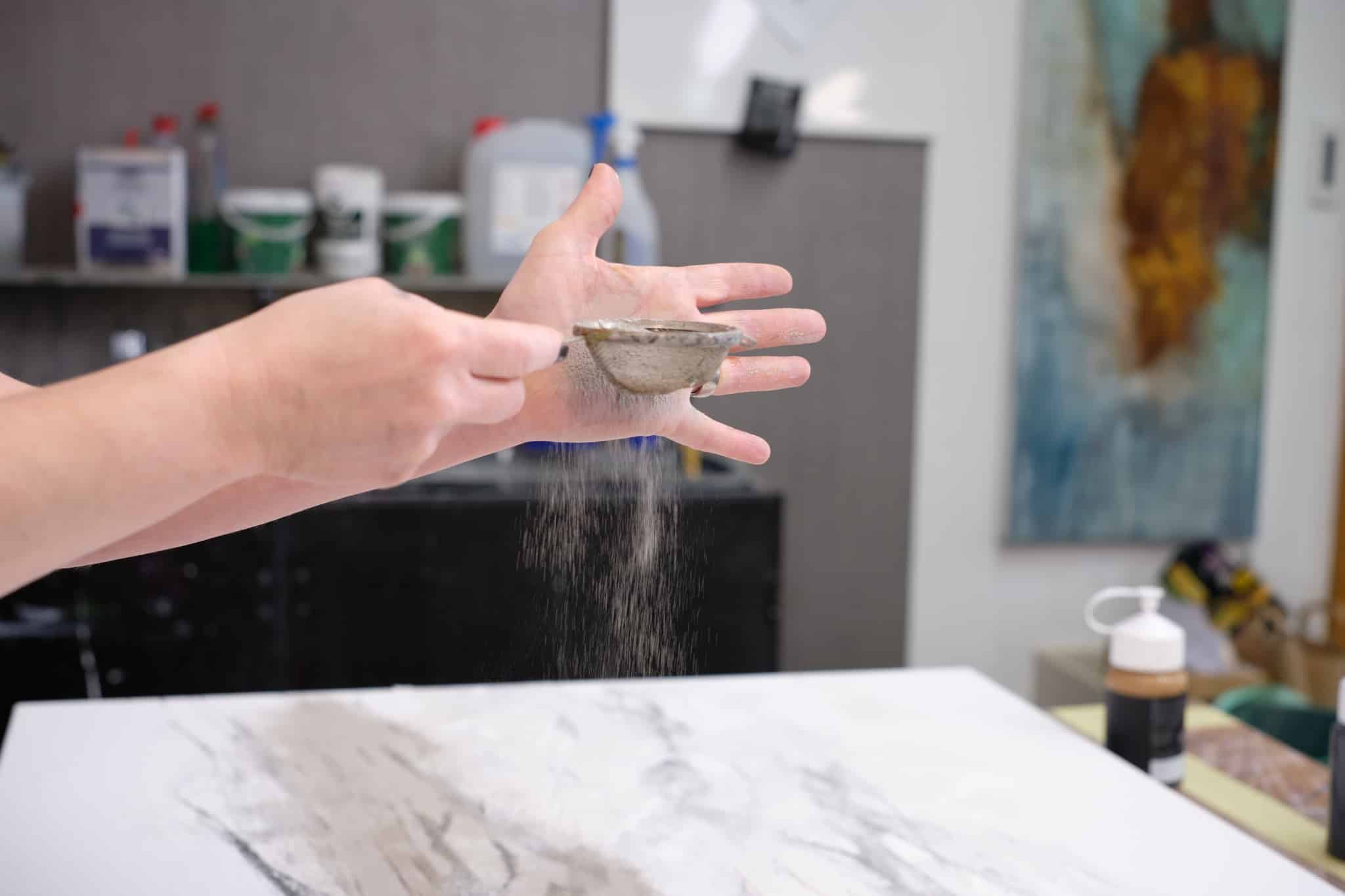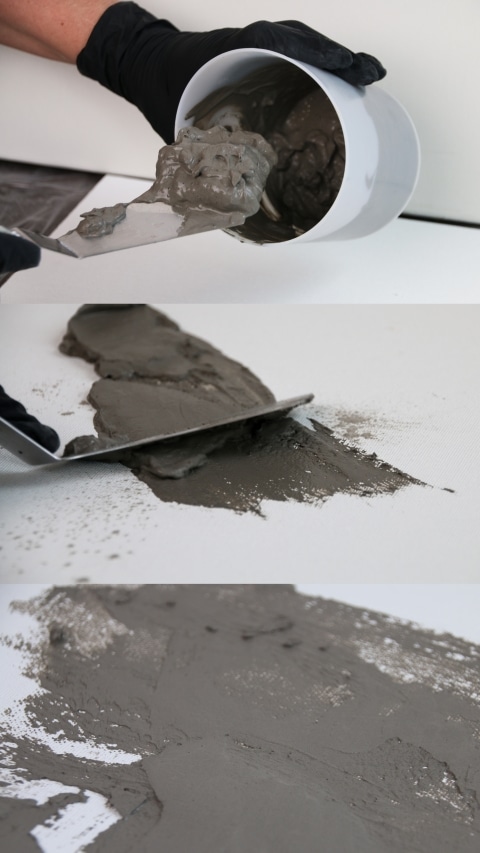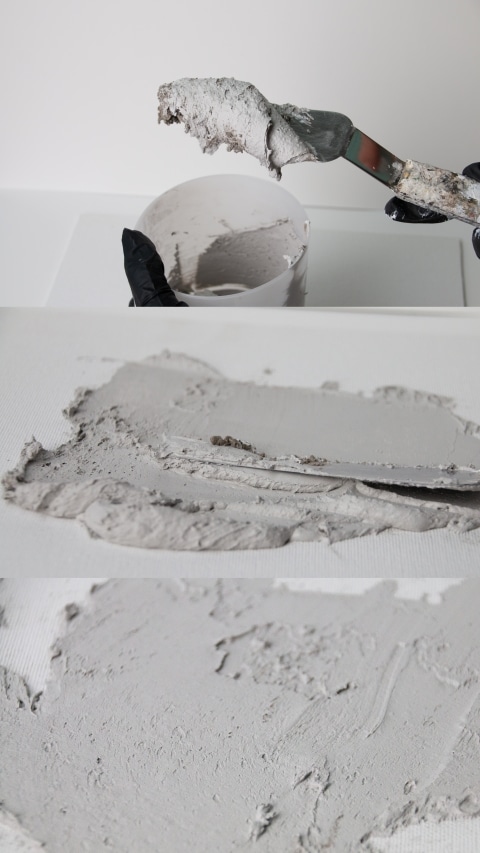stone powder

The stone powder is a filler. You can use it to make your own putty and create interesting structures and surfaces. Give free rein to your love of experimentation.
make your own putty with acrylic adhesive
The products to be used are acrylic adhesive and stone powder in a ratio of 1:3. Our acrylic adhesive has a creamy consistency, extremely high adhesive strength and is snow-white (but dries transparent). Thus, the color of the gray stone powder is preserved. Other fillers such as ash, sand, etc. can also be used for this purpose.
Take a tall container with a smooth side wall. Fill the acrylic adhesive into this vessel and gradually add the stone powder. This mixture is very easy to mix with a spatula or a painting knife. Use the spatula to smooth out the mixture on the side wall of your container. Depending on your needs, you can mix the putty a little thinner or thicker. It all depends on how you want the putty to look on your artwork.


A self-made putty is often easier to work with and produces a more beautiful result, since finished putties often have a plastic-like surface and no longer absorb color. They then look like a foreign body in the painting.
make your own putty with chalk color
You can also use chalk color white instead of acrylic adhesive. This has the advantage that due to the high chalk content in the paint, cracks are more likely to form after drying. Cracking can be increased by applying heat. You can use a conventional hair dryer for this purpose. The thicker the putty (chalk paint and stone powder) is applied, the more cracks will appear.
tip for applying the putty with stone powder
Apply the putty in different thicknesses to achieve different effects. In the painting, contrasts always come out beautifully. Pay attention to the composition of the artwork.
apply stone powder loosely
A filler, like the stone powder, always needs a adhesive. Sprinkle this onto the still wet paint or your damp base. Spray it again with water or brush it gently with a spatula. Sweep off the loose material after it dries and save it for your next work. Anything that sticks to the canvas will again be the basis for further processing possibilities. If you wish, fix this area with a pastel fixative spray, but this is not absolutely necessary. If some stone powder still comes off, it will mix again with the newly applied layer of paint. This technique is also very popular for painting landscapes. Stone structures and landscape planes look very impressive with this technique.